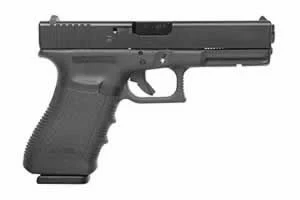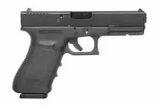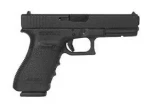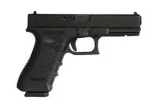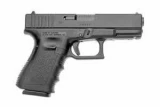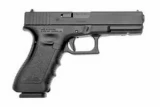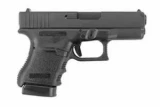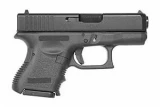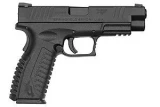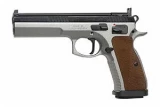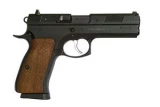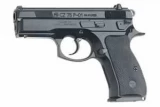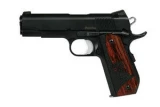Glock 20 vs Massachusetts Arms Wesson & Leavitt Revolver
Put handguns head to head to compare caliber and more.
| vs |
$0.00
|
| Handguns | Glock 20 | Massachusetts Arms Wesson & Leavitt Revolver |
|---|---|---|
| Summary | ||
| Rating | ||
| Rank | ||
| Action | Safe Action | |
| Caliber | 10mm Auto | .31 Caliber |
| Capacity | 15+1 | 17+1 |
| Finish | Black | Stainless Steel |
| Sights | Fixed | Adjustable Open U - notch |
| Barrel Length | 4.60" | 23.37" |
| Weight | 40 oz | |
| Gun Type | Revolver | |
| Details | ||
| Brand | Glock | |
| Reviews | See 10 Reviews | N/A |
| Prices | ||
| MSRP | $811.88 | $0.00 |
| Used Price | $568.32 | $0.00 |
| Sale Price | $730.69 | $0.00 |
Handguns Descriptions
Glock 20
The GLOCK 20 Gen4, in 10mm, provides nothing short of massive firepower. The use of GLOCK hi-tech polymer considerably reduces felt recoil. With muzzle energy of 550 ft/lbs and a magazine capacity of 15 rounds, this 10mm is your reliable companion on every hunt. The Gen4 edition now incorporates a wider selection of grip dimensions to make customizing your grip even more precise. Glock 20 Gen 4 Specs at a glance - Caliber: 10mm Barrel: 4.61 inches Overall Length: 8.07 inches Weight: 30.69 ounces (empty) Grips: Polymer, modular backstrap Sights: White-dot Action: Semi-auto Finish: Polymer frame/Tenifer slide Capacity: 15+1
Massachusetts Arms Wesson & Leavitt Revolver
he Wesson & Leavitt Revolver was a single action black-powder revolver made by Massachusetts Arms Company in Chicopee Falls, MA. The first arms produced by Mass Arms were percussion revolvers designed by Edwin Wesson (brother of Daniel Wesson) and Thomas Warner (who was the factory superintendent). The revolvers were produced under patents held by Wesson and Daniel Leavitt. The first guns produced in 1850 were the larger “Dragoon” sized revolvers in .40 caliber. Later in 1850, the firm introduced a “Belt” size revolver in .31 caliber. Both revolvers utilized side-mounted, back action locks that operated in a “single action” fashion. They had a hinged top strap that connected the barrel to the rear portion of the frame, which contained the lockwork. The barrel was held in a stationary and locked position by a swinging latch that secured the topstrap to the forward portion of the cylinder arbor pin. The guns had six shot cylinders with convex beveled fronts, and oval cutouts for the percussion cones, which entered the chambers at about a 30-degree angle. The coking action of the hammer rotated a back plate in the frame of the revolver. This back plate rotated the cylinder by way of a pin, which extended from the plate and engaged a hole on the rear face of the cylinder. A second, smaller pin would move in and out of the frame, engaging smaller holes on the rear of the cylinder that corresponded to each chamber, allowing for accurate indexing and lock up of the cylinder. The guns were manufactured with round blued barrels, case hardened frames and brass back straps and trigger guards, which were silver-plated. During the brief production run (1850-1851) of Wesson & Leavitt revolvers, Mass Arms produced about 800 of the larger Dragoon revolvers and approximately 1,000 of the Belt revolvers. Production ended during 1851 due to a successful patent infringement lawsuit that was filed by Samuel Colt.

